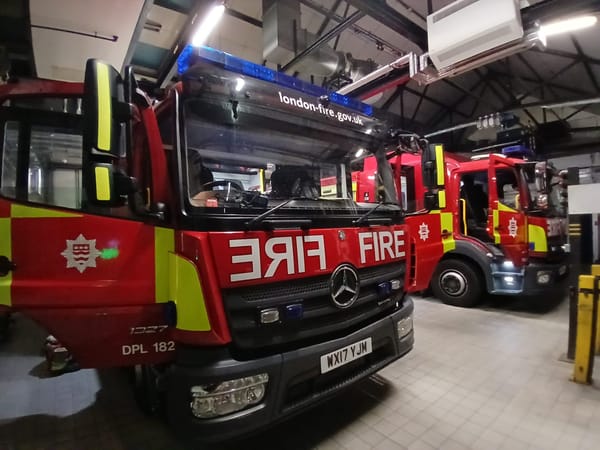Vowel Analysis Between Two English Speakers

This study uses unnormalized and normalized data to compare FLEECE, GOOSE KIT, DRESS, TRAP, BATH, and THOUGHT vowels from two British English Speakers. It is hypothesized different pronunciations will occur as speakers differ in sex and birthplace (Hughes, Trudgill, & Landon, 2013).
Females have higher formant frequencies and larger vowel spaces than males due to anatomical and social differences (Diehl, Lindblom, Hoemeke, & Fahey, 1996; Hillenbrand, Getty,
Clark, & Wheeler, 1995). The male vocal tract length is 17-18cm whilst females are 14-14.5cm (Simpson, 2009). The ear eliminates acoustic gender differences, enabling perception of the same vowels (Wayland, 2019). Normalization enables a more accurate representation of perceptual differences by eliminating physiological ones whilst preserving sociolinguistic and phonological distinctions (Wayland, 2019; Watt, 2011).
Methodology
Participants
Recordings were taken from two native British English speakers: a female speaker (f1) from Stockport, Manchester and a male speaker (m1) from Chesterfield, Derbyshire. Both speakers lived here until 18-years-old.
Materials
Praat enabled vowel labelling and formant analysis whilst NORM enabled vowel plotting and data normalization (Kendall & Thomas, 2010).
Procedure
Speaker recordings of vowels in isolated hVd words were labelled in praat using Well’s lexical sets. The recorded words were had, hard, head, heed, hid, hoard, hud, and who’d. A formant analysis was conducted, and measurements taken from Tier1 ‘vowels’ at the 50% interval following the procedure for displaying monophthongs (Watt, 2011).
One unnormalized and two normalized vowel plots were created using NORM. The Lobanov (vowel-extrinsic) and Bark (vowel-intrinsic) methods were used. Following NORM guidelines, Lobanov data was scaled to avoid resulting in non-Hz values.
Normalization eliminated formant differences caused by anatomical variation, enabling identification of sociolinguistic features (Watts, 2011). The Lobanov method was chosen for its high accuracy eliminating anatomical differences; the Bark method was chosen as it prevents skewing due to dialectal differences (Thomas & Kendal, 2007)
Results



Discussion
Unnormalized
Figure1 shows f1 uses a larger vowel space area compared to m1. The F1 and F2 ranges for the f1 are F1= 561.8Hz and F2= 1,918.2Hz whilst the m1 ranges are F1=364.8Hz and F2=1,343.9Hz. The ‘Sufficient Contrast Method’, argues greater vowel dispersal in females enables easier vowel identification which might otherwise be lost due to their higher fundamental frequencies (Diehl et al., 1996). Alternatively, Traunmüller (1984) argues smaller dispersal in males occurs due to continuation of motor actions before pubescent larynx dropping.
Table 1 shows f1 has higher formant values for most vowels. Simpson (2009) explains female /a/ vowels differ from males along F1 because female vocal tracts are 3-4cm shorter, resulting in higher formant frequencies (Diehl et al., 1996).
Normalized
Lobanov. Figure2 shows the m1 and f1’s FOOT, THOUGHT, and FLEECE set-pairs are closer than the unnormalized plot. This is due to Lobanov normalization eliminating anatomical differences (Thomas & Kendall, 2007).
The m1’s GOOSE vowel is more closed and fronted than f1’s. This is unexpected as the f1 is from Manchester where a fronted /uː/ is a dialectal feature (Hughes, Trudgill, & Landon, 2013). The Lobanov method may have skewed the formant as this method requires all the vowels of a speaker’s vowel space to plot accurately (Thomas & Kendall, 2007).
In both normalizations, both speakers’ TRAP and BATH vowels remain distinct. As both speakers are from regions without the TRAP-BATH split it was expected their BATH vowels would to be closer to /a/ than /ɑː/ (Hughes et al., 2013; Braber & Robinson, 2018). Regional dialect levelling explains this, arguing local dialect mixing causes dialectal features to become less distinct ("Regional Dialect Levelling", 2007).
Bark. Figure 3 shows GOOSE and DRESS being more fronted and open and FOOT and THOUGHT less clustered. This shape occurs as vowels are plotted based on Bark units which arranges frequencies into critical hearing bands rather than Hz (Smith, 2011).
Unlike Lobanov, the Bark Normalization resulted in both speakers having fronted and lowered GOOSE vowels. A consequence of the FLEECE vowel appearing stretched away from GOOSE as Bark relies heavily on F3 values and /iː/ has a higher F3 (Thomas & Kendall, 2007). However, f1’s GOOSE may be fronted due to her Mancunian dialect (Hughes et al., 2013).
The f1’s KIT vowel in both normalizations is more closed than m1’s. This is unexpected as /I/ has little variation across Britain (Braber & Robinson, 2018). Sachs et al. 1973 study (as cited in Diehl et al., 1996), stating speakers may attempt to make their voices more ‘masculine’ or ‘feminine’, could explain this.
References
Braber, N., & Robinson, J. (2018). East Midlands English. Berlin: Walter de Gruyter &. Retrieved February 12, 2023, from https://ebookcentral.proquest.com/lib/lancaster/reader.action?docID=5157618
Diehl, R. L., Lindblom, B., Hoemeke, K. A., & Fahey, R. P. (1996). On explaining certain male-female differences in the phonetic realization of vowel categories. Journal of Phonetics, 24(2), 187-208. doi:10.1006/jpho.1996.0011
Hann, J., & Van Heuven, V. J. (1999). Male vs. female pitch range in Dutch questions. Proceedings of the 14th International Congress of Phonetic Sciences, 14, 15811584.
Hillenbrand, J., Getty, L. A., Clark, M. J., & Wheeler, K. (1995). Acoustic characteristics of American English vowels. The Journal of the Acoustical Society of America, 97(5), 3099-3111. doi:10.1121/1.411872
Hughes, A., Trudgill, P., & Landon, W. (2013). English accents & dialects: An introduction to social and regional varieties of English in the British Isles (5th ed.). Routledge. Retrieved February 12, 2023, from https://ebookcentral.proquest.com/lib/lancaster/reader.action?docID=967126#
Kendall, Tyler and Erik R. Thomas. 2010. Vowels: Vowel Manipulation, Normalization, and Plotting in R. R package, version 1.1. [ Software
Resource: http://ncslaap.lib.ncsu.edu/tools/norm/ ]
Regional dialect levelling. (2007). Retrieved February 12, 2023, from https://en.citizendium.org/wiki/Regional_dialect_levelling
Simpson, A. P. (2009). Phonetic differences between male and female speech.
Language and Linguistics Compass, 3(2), 621-640. doi:10.1111/j.1749-818x.2009.00125.x
Smith, J. O. (2011). The bark frequency scale. Retrieved February 12, 2023, from https://ccrma.stanford.edu/~jos/sasp/Bark_Frequency_Scale.html
Thomas, Erik R. and Tyler Kendall. 2007. NORM: The vowel normalization and plotting suite. [ Online Resource: http://ncslaap.lib.ncsu.edu/tools/norm/ ]
Traunmüller, H. (1984). Articulatory and perceptual factors controlling the age- and sex-conditioned variability in formant frequencies of vowels. Speech Communication, 3(1), 49-61. doi:10.1016/0167-6393(84)90008-6
Watt, D., Fabricius, A., & Kendall, T. (2011). More on vowels: Plotting and normalization. In 2358979404 1606403918 M. D. Paolo & 2358979405 1606403918 M.
Yaeger-Dror (Authors), Sociophonetics: A student's guide. London: Routledge.




